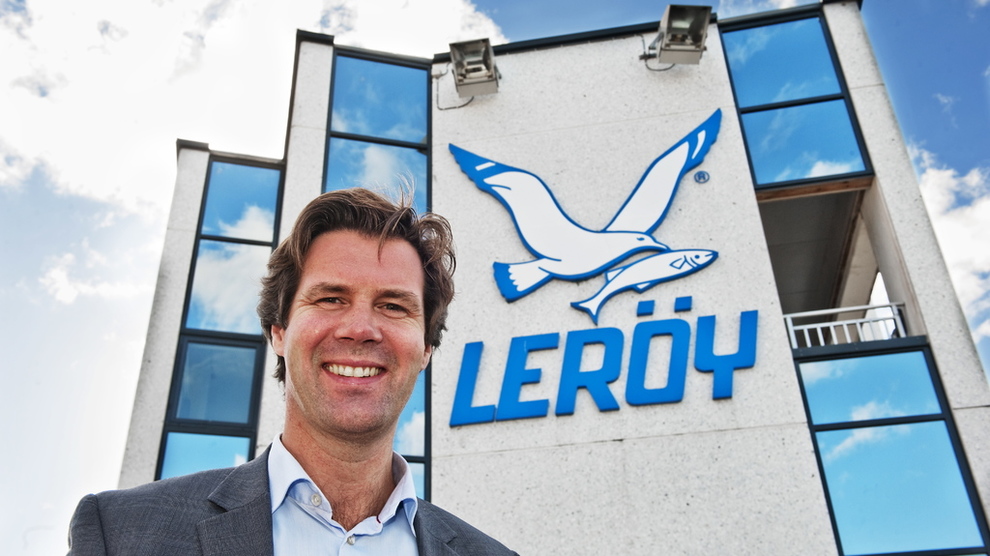Lerøy reports record half-year turnover

THE Lerøy Seafood Group, one of the few companies with a significant combined salmon farming and conventional fishing business, today announced impressive second quarter results for this year.
The company, which owns 50 per cent of Scottish Sea Farms, reported total revenues of NOK 5,042 million (£465 million), compared to NOK 4,224 million (£389 million) in the same period in 2017.
The operating profit before fair value adjustment related to biological assets was higher this year at NOK 1,000 million (£92.2 million), compared to NOK 801 million (£74 million) in Q2 2017.
Lerøy said the increase in profit can mainly be attributed to a higher harvest volume for salmon and trout.
Exclusive of earnings from the wild catch segment, this corresponds to an EBIT per kilo before value adjustment related to biological assets in Q2 2018 of NOK 23.4 compared to NOK 27.3 for the same period in 2017.
The group said first half revenues totalled NOK 10,042 million (£926 million), up four per cent on the equivalent period last year.
This is the highest turnover ever reported by Lerøy for a first half year. The operating profit before fair value adjustment related to biological assets for the first half of 2018 was NOK 1,960 million (£180.7 million) compared with NOK 2,078 million (£191.6 million) for the first half of 2017.
Lerøy CEO Henning Beltestad (pictured) said: ‘The salmon and trout prices in Q2 2018 were extremely volatile and remain at a high level.
‘The high prices and increased harvest volume in the quarter are the main factors behind the highest second quarter operating profit in the Lerøy Seafood Group’s history.
‘However, the prices realised in total by the group have been impaired by a number of aspects: the realised prices for trout are lower than those for salmon; the group had a harvesting profile in June with high release from stock at lower prices; and the downgrading of quality in one of the group’s regions.
‘The group’s release from stock costs are up from Q1 2018 to Q2 2018, with a significant difference in costs between the different regions.
‘Despite this, the group expects to see a positive development in release from stock costs in the second half of the year.’
The farming segment reported operating profit before fair value adjustment related to biological assets of NOK 833 million in Q2 2018, up from NOK 613 million in Q2 2017.
A total of 38,000 tonnes gutted weight of salmon and trout was harvested in Q2 2018, up 45 per cent from the same period in 2017; EBIT/kg fell from NOK 23.4 per kg in Q2 2017 to NOK 22.0 per kg in Q2 2018.
Beltestad said: ‘The farming segment is currently making substantial investments in new industrial facilities to improve productivity throughout the value chain, including investments in several regions to gain access to larger high-quality smolt.
‘We are very confident that the new facilities will produce more robust smolt that will in turn gradually allow substantial organic growth in our annual harvest volume.’
[Wild catch segment]
Lerøy-owned Havfisk reported positive results, too, with a steep rise in haddock prices in particular.
With a fleet of ten trawlers, Havfisk’s total catch volume in Q2 2018 was 18,190 tonnes, compared with 16,769 tonnes in Q2 2017.
This included 3,817 tonnes of cod, 5,401 tonnes of saithe and 441 tonnes of haddock. The prices for cod and haddock increased by 15 per cent and 48 per cent respectively in the quarter, while prices for saithe fell by six per cent.
Beltestad said: ‘There is also strong and rising demand for white fish, and the wild catch and white fish segment can report a positive development, with increased catch volumes and higher average prices for catches.
‘The situation is challenging for shore based industrial operations, but the group has implemented a number of initiatives and is investing in both production and marketing to boost earnings.
‘These are, however, long-term initiatives and it will take time before significant improvements are evident.’

